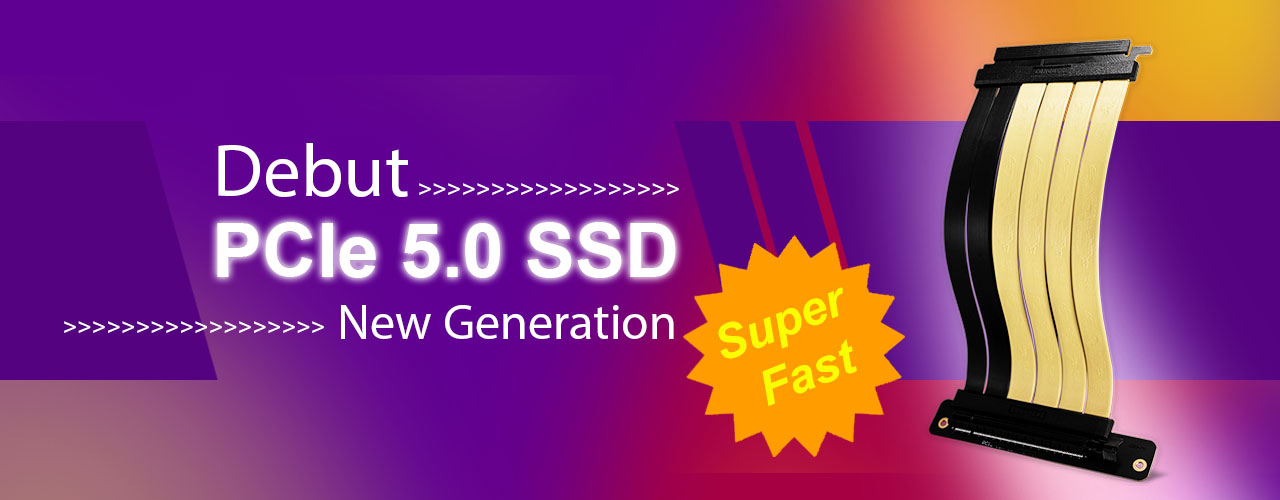PCIe 5.0 SSD

Recently, Intel and AMD platforms have successively supported PCIe 5.0. The new generation of SSD PCIe 5.0 has also brought us super performance, with a bandwidth of 32GT/s, which is twice that of PCIe 4.0. Although PCIe 4.0 products have just been popularized in customer or enterprise-level applications, PCIe 5.0 products are already in the early stage of growth potential. Whenever the new standard is implemented, the market is often consumer and enterprise-level storage. Preferred, PCIe 5.0 is no exception. Recently, many manufacturers have successively launched PCIe5.0 NVMeSSD solutions. Except for manufacturers such as Samsung that use self-developed controller solutions, many SSDs on the market still use SSD controllers from OEM manufacturers. The main control solution manufacturer InnoGrit today brought a new PCIe 5.0 SSD main control solution "Tacoma IG5669". The IG5669 master adopts 4-channel PCIe 5.0 interface, has 16/18 NAND flash channels (the highest speed is 2667MT/s), supports the latest NVMe 2.0 protocol, DDR5 cache, ONFI 5.0, Toggle 5.0, and parallel commands through 10-core CPU It can fully utilize the bandwidth advantages of PCIe 5.0 and DDR5, and can be used in high-end storage fields including high-end computers, enterprise-level applications, data centers, and artificial intelligence. In terms of performance, the sequential read speed of IG5669 can be as high as 14GB/s, the sequential write speed can also run to 11GB/s, and the random read and write speed can be as high as 3 million IOPS and 2.5 million IOPS.
The performance promised by these released main controllers makes people yearn, but how far are these PCIe 5.0 SSDs from us? Although many main controller manufacturers, including Yingren Technology, have released products, they have not yet been fully mass-produced. For example, E26 announced in the news last September that it had successfully completed 12nm tape-out, and not long ago It has been with the motherboard manufacturer. The sample has been developed and tested in cooperation with commercial companies, and it is expected that the product will be available in the second half of this year. Microchip's FlashtecNVMe4016 will not be fully put into production until the second half of 2023 to meet the needs of related products from 2024 to 2025. This time plan is also consistent with another SSD controller manufacturer, Silicon Motion. Considering that the current support for PCIe 5.0 is not perfect, such as Intel's 12th-generation Alder Lake processors, and this series of processors supports PCIe 5.0 only on the desktop side, the mobile terminal still only supports PCIe 4.0. As for AMD, only the Zen4 processor planned at the end of this year will support PCIe 5.0. Except for consumer chips, some server chips may soon support PCIe 5.0, but this type of PCIe 5.0 SSD is still in the process of brewing , so I won't meet with us for a while. More worrying is the cost issue. Judging from the current market conditions, the price of PCIe 4.0 SSDs has not dropped yet. If PCIe 5.0 SSDs are launched at this time, they will be available at a high price just like DDR5 memory. .
In the past nearly one year, the PCIe standard card specification (CEM 5.0) for PCIe 5.0 rate has completed the release of various electrical and mechanical specifications. We have always believed that whether it is NVIDIA Ada RTX 40 series or AMD RDNA3 RX The 7000 series should support PCIe 5.0, especially the data center-level Hopper H100 core, and the RTX 3090 Ti is also the first to support the PCIe 5.0 power supply standard. However, the NVIDIA RTX 40 series still only supports PCIe 4.0 for unknown reasons. What about AMD here? According to a reliable exposure expert @Kepler_L2, the AMD Navi 31 core will definitely support PCIe 5.0, and it will be called the RX7900 XT, unsurprisingly. He did not disclose where he got the news, but recently, AMD began to frequently add information about the Navi 3x series cores to Linux kernel patches, which should have found clues. Perhaps PCIe 5.0 speed will be a highlight of server products launched in 2022, and its signaling speed will be twice that of PCIe 4.0 currently being promoted, which will provide greater data transfer bandwidth. Although the PCI-SIG organization released the PCIe 5.0 Base Spec in May 2019, since there are many PCIe cards on the server, the PCIe CEM 5.0 specification and product information that define the PCIe cards on the motherboard have attracted more attention from the industry.
Pinwei Electronics focuses on the connection of graphics card docking devices in the industry. This year, it has also embarked on the plan of PCIe 5.0 related products, hoping to upgrade the speed of existing clients this year, and launch the marketing of the channel market to pursue the interface speed of the next step.